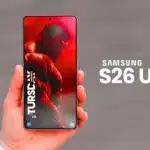It’s harder than ever to catch your audience’s attention in the fast-paced digital age. With users constantly inundated with content from multiple platforms, businesses need to find innovative ways to stand out. Social media has become one of the most powerful tools for businesses to connect with their audience, and a well-designed social media poster is a critical component of this strategy. Social media posters are a quick and effective way to communicate your brand’s identity, create emotional connections, and reinforce your message. The design of these posters plays a vital role in driving engagement.
A visually striking poster is not only eye-catching but also reinforces brand values, prompts action, and fosters meaningful interaction. Whether used to promote a product, announce an event, or simply engage followers with a post, the impact of a social media poster on audience engagement cannot be underestimated. By crafting compelling, on-brand designs, businesses can boost visibility, foster deeper connections with their audience, and significantly enhance their marketing outcomes.
Why Social Media Posters Are Important for Branding
Social media posters are vital for businesses aiming to strengthen their brand presence online. Their visual nature allows companies to communicate messages quickly and effectively, making them ideal for capturing attention in crowded digital spaces. Consistent design elements such as logos, fonts, and colors help reinforce brand identity, fostering recognition. These posters also drive engagement by encouraging likes, shares, and comments, increasing visibility. Moreover, compelling calls-to-action (CTAs), guide users to take meaningful steps, such as visiting websites or making purchases. Social media posters also enhance overall marketing strategies by complementing other digital campaigns. Their versatility allows brands to stay relevant by aligning with trends or events. Lastly, their measurable impact allows businesses to assess performance and optimize future efforts.
Building Brand Recognition
Consistent use of brand colors, fonts, and logos across social media posters helps reinforce brand identity. Repeated exposure ensures that your audience starts recognizing your brand effortlessly, creating long-term familiarity.
Increasing Audience Engagement
Social media posters that combine compelling visuals with clear and relevant messages are more likely to grab attention. Engaging designs encourage interaction, whether through likes, shares, or comments, which boosts engagement and fosters a connection with your audience.
Driving Conversions
A social media poster with a strong call-to-action (CTA) guides users toward taking specific actions, such as visiting a website, making a purchase, or signing up for a newsletter.CTA placement allows you to affect user behavior and eventually increase conversions.
Improving Communication
Social media posters allow brands to communicate messages in a concise yet impactful way. With limited space for text and the power of visuals, you can distill complex ideas into easy-to-digest content, helping your audience grasp key messages quickly. Whether it’s promoting a sale, launching a product, or sharing company news, a well-crafted poster delivers the message efficiently.
Targeting the Right Audience
Social media platforms offer advanced targeting features that allow brands to reach specific demographics. By tailoring posters to meet the interests and preferences of your audience, you can create more personalized and effective marketing campaigns. This ensures that your content reaches the right people, at the right time, and with the right message.
Building Trust and Credibility
To gain your audience’s trust, you must be consistent.. Using social media posters that align with your brand’s tone, style, and messaging reinforces your brand’s reliability. The more often your audience sees professional and polished designs, the more they begin to trust your brand and perceive it as credible and trustworthy.
Increasing Shareability
Visually appealing and well-designed social media posters have a higher likelihood of being shared. Users are more inclined to share your material with their networks when it speaks to them, which broadens your audience and boosts your visibility. Shareable content helps to amplify your brand’s presence across social platforms, driving organic growth.
Enhancing Marketing Campaigns
Social media posters are an excellent complement to broader digital marketing campaigns. Whether you’re running paid ads, promoting events, or executing content marketing strategies, posters can serve as eye-catching assets that draw attention to your campaign’s goals. They can also drive traffic to specific landing pages, increasing the chances of conversion.
Adapting to Trends and Events
Social media posters are versatile and can be easily adapted to reflect trending topics, holidays, or major events. By staying relevant and timely, you can engage your audience in conversations that matter to them, keeping your brand top-of-mind and encouraging ongoing interaction.
Measuring Impact
One of the key advantages of social media posters is the ability to track their effectiveness. Analytics tools can provide insights into how your posters are performing—such as how many views, clicks, likes, shares, and comments they generate. These metrics allow you to fine-tune your approach and ensure that future posters achieve even better results.
Key Elements of Social Media Poster Design and Their Role in Branding
| Element | Role in Branding |
| Color Palette | Establishes brand personality and recognition. |
| Typography | Conveys tone and professionalism, aiding in brand voice. |
| Logo Placement | Reinforces brand identity and increases recall. |
| Imagery | Evokes emotions and creates connections with the audience. |
| Call to Action (CTA) | Guides the audience toward desired actions (e.g., purchase, signup). |
The Essential Principles of Effective Social Media Poster Design
Designing an effective social media poster involves balancing creativity with strategy. First and foremost, a design that is clear and eye-catching is crucial. The use of appropriate colors, fonts, and high-quality images can draw attention and convey the right mood for your brand. Consistency is key, ensuring your brand’s visual identity is maintained across all posters, from the logo to the color palette. The text should be concise and easy to read, with a clear message that resonates with your audience. High contrast between background and text improves readability, while hierarchy in design guides the viewer’s attention to the most important elements. In addition to visual aesthetics, incorporating a strong call-to-action (CTA) is crucial.
Your CTA should be clear, action-oriented, and placed where it stands out without cluttering the design. The poster should also align with your marketing goals, whether it’s promoting a product, event, or brand awareness. Timing and relevance are equally important—make sure the design reflects trends, seasonal themes, or current events that are important to your audience. Finally, keep in mind the platform’s specifications and user behavior; what works on Instagram may need adjustments for Facebook or LinkedIn. By following these principles, you can create posters that not only look great but also drive engagement and conversions.
Focus on Simplicity
In the quick-paced world of social media, attention-grabbing minimalism is crucial. A cluttered poster can confuse or overwhelm viewers, leading them to scroll past without engaging. By using minimal text and bold, clear visuals, you can convey your message quickly and effectively. Keeping the design clean and focused ensures that the core message is easily understood at a glance, increasing the likelihood of interaction.
Consistency Across Platforms
Consistency in design is crucial for building a strong, recognizable brand. Social media posters should maintain the same style across all platforms to ensure a cohesive brand identity. This includes using a consistent color palette, font choices, and logo placement, whether you’re posting on Facebook, Instagram, Twitter, or LinkedIn. By maintaining uniformity in your visual elements, you create a seamless user experience, making it easier for your audience to recognize your brand. Consistent branding across platforms not only strengthens brand recognition but also helps build trust and credibility with your audience.
Use High-Quality Images
The visuals in your social media poster are the first thing users will notice, so they must be of the highest quality. Blurry or pixelated images can undermine your brand’s credibility and give a negative impression. Always opt for high-resolution images that are sharp, clear, and professional. The images should also be relevant to your brand message, whether you’re highlighting a product, promoting a service, or conveying a lifestyle. High-quality visuals not only enhance your poster’s appeal but also help communicate your message more effectively, reinforcing your brand’s professionalism and attention to detail.
Create a Strong Call to Action (CTA)
A strong call to action (CTA) is essential in guiding your audience to take the next step after viewing your social media poster. Whether the goal is to drive traffic to your website, encourage a purchase, or increase followers, the CTA should be clear and compelling. Make it bold and concise, ensuring it stands out from the rest of the design. Action-oriented phrases like “Shop Now,” “Learn More,” or “Join Us Today” create a sense of urgency and motivate users to engage immediately. A well-crafted CTA enhances the poster’s effectiveness and helps convert viewers into active participants.
Consider Your Audience
When designing social media posters, it’s crucial to consider your target audience’s preferences and behaviors. Understand their age, interests, and how they interact with content online. Are they visual learners who respond better to images over text? Do they appreciate minimalist designs or prefer more detailed, vibrant visuals? Tailoring your design to these factors ensures it resonates with your audience, increasing engagement and effectiveness. By aligning the design with their needs and expectations, you can create more relevant, impactful content that drives action and builds a stronger connection with your audience
Design Elements for Different Social Media Audiences
| Audience Type | Design Elements to Use |
| Millennials | Bold colors, vibrant imagery, fun, and relatable content. |
| Gen Z | Minimalist designs, modern typography, edgy visuals. |
| Professionals | Clean, sleek designs with a focus on brand values and trust. |
| Elderly Audience | Clear, large fonts, soft colors, and easy-to-read text. |
Creating a Social Media Poster That Drives Engagement
Engagement is a key metric for evaluating the success of your social media campaigns, and your posters should be designed to encourage this. While aesthetics are important, it’s essential to create designs that prompt action and interaction. Start by incorporating visually striking elements that catch the eye, but also ensure your content has a clear, relatable message. The more personal and relevant the poster feels to your audience, the more likely they are to engage. Including interactive elements like polls, questions, or prompts to comment can spark conversation and drive deeper engagement.
Another powerful strategy is to use strong calls to action (CTAs) that encourage followers to take the next step—whether it’s liking, sharing, commenting, or visiting your website. Leveraging timely or trending topics also helps connect with your audience on a more relevant level. Additionally, posting content that encourages user-generated content (UGC), like asking followers to share their experiences or tag a friend, can exponentially increase engagement. By keeping your designs user-centered and action-driven, you’ll enhance the potential for interaction and help your brand gain more visibility.
Utilize Interactive Elements
Engage your audience by incorporating interactive elements into your posters. Ask questions, encourage comments, or create posters that invite your audience to share their thoughts. For example, you can post a poll or quiz in the form of a poster and encourage people to participate.
Promote User-Generated Content (UGC)
Encourage your followers to create content related to your brand and share it on social media. User-generated content is powerful because it builds community and fosters authenticity. Design posters that ask your audience to share their experiences with your product or service and tag your account.
Use Hashtags Strategically
Hashtags are one of the best ways to increase the visibility of your social media posts. By using relevant hashtags, you ensure your content reaches a wider audience. Research trending and niche hashtags within your industry to include in your posts. This can help boost your post’s engagement significantly.
Incorporate Time-Sensitive Offers
Limited-time offers or promotions can create a sense of urgency, motivating users to take action. For example, you can design a poster promoting a “flash sale” or a limited-time discount. Highlighting urgency through design elements like countdowns or bold text can increase conversion rates.
Social Media Poster Design Tools and Resources
Creating eye-catching social media posters no longer requires specialized design skills or costly agencies. With a variety of online tools, anyone can design professional-looking posters with ease. Platforms like Canva, Adobe Spark, and Crello offer ready-to-use templates, intuitive drag-and-drop functionality, and access to a wide range of fonts, images, and design elements. These tools are designed for all skill levels, allowing you to create visually stunning posters quickly without needing extensive design experience.
Additionally, there are numerous resources available to enhance your designs. Stock image websites like Unsplash, Pexels, and Shutterstock provide high-quality, royalty-free images that can be integrated into your posters. Font websites like Google Fonts and DaFont offer a diverse selection of typography to match your brand’s style. For more advanced designs, tools like Adobe Photoshop or Illustrator can offer full creative control, though they require more experience. By utilizing these tools and resources, you can create compelling social media posters that capture attention and drive engagement.
Canva
Canva is one of the most user-friendly design tools available. It offers pre-designed templates for social media posts, which makes it easy for anyone to create a professional-looking poster in minutes. Canva also offers a range of free and premium stock photos, fonts, and design elements.
Adobe Spark
Adobe Spark is another powerful design tool that allows users to create stunning social media posters with ease. With its intuitive interface, you can create designs in minutes, using their templates or custom designs. It also offers integrated social media sharing features.
Crello
Crello is similar to Canva but with some additional features like animation and video capabilities. This can be particularly useful for creating dynamic posters that stand out in a user’s feed. With thousands of templates to choose from, Crello is an excellent tool for creating diverse and engaging posters.
Piktochart
Piktochart is perfect for creating infographics and visually rich content. It also offers social media poster templates, which can help you design posters that are informative and engaging. Piktochart is great for data-driven posters or those that need to explain complex information visually.
How Social Media Poster Design Affects Your ROI
Social media posters are more than just eye-catching visuals; they serve as strategic tools to drive tangible results for businesses. The design elements—color, typography, layout, and imagery—must align with the brand’s identity while also speaking to the needs and preferences of the target audience. A well-thought-out social media poster can act as a powerful sales and marketing tool, not just a decorative piece. Here’s a deeper look at how poster design influences ROI:
- User Engagement: A strong visual design Additionally, engaged users have a higher chance of becoming devoted followers or even buyers. Generates, the more likely it is to be shared, expanding its reach organically. Engaged users are also more likely to become loyal followers or even customers. By creating posters that provoke conversation or emotions, businesses can encourage a deeper connection with their audience, which translates into higher engagement metrics.
- Brand Recall and Recognition: Consistent and appealing poster designs help reinforce brand identity. When people regularly encounter posts with recognizable design elements, they are more likely to remember your brand and associate it with the values and messages you communicate. This sustained brand exposure can lead to increased trust and brand loyalty over time, boosting both conversions and ROI.
- Effective Call to Action (CTA): Social media posters with clear and compelling CTAs are more likely to convert viewers into customers. Whether it’s urging users to shop now, sign up for a newsletter, or take advantage of a limited-time offer, a strong CTA can drive immediate action. The design of the CTA—how it stands out visually and is integrated into the overall poster—can significantly influence whether users follow through.
- Target Audience Optimization: Tailoring poster designs to specific segments of your target audience can improve ROI. A well-designed poster speaks directly to a particular demographic’s needs or interests, which increases the likelihood of them taking the desired action. Whether you’re targeting millennials with a sleek, modern design or an older audience with a more classic aesthetic, customizing your posters can increase conversions and ensure that your marketing dollars are well spent.
- Consistency Across Platforms: A consistent and cohesive design across social media platforms ensures that your brand messaging stays strong and clear, which in turn increases the likelihood of generating a return. The design of social media posters should be adaptable to various formats (square, vertical, horizontal) but still maintain a consistent visual identity that audiences recognize across platforms. This helps reinforce the brand message and improves brand recall, leading to higher engagement and better ROI.
- Performance Analysis and Optimization: Measuring ROI isn’t a one-time activity. The true value of social media posters can only be understood when you continually track their performance. Regularly analyzing engagement metrics, conversion rates, and brand reach allows businesses to optimize future designs. By experimenting with different design elements and testing various formats, you can identify which posters are performing best and refine your design strategy to maximize ROI over time.
Wrapping Up
As we’ve explored, the true impact of a well-designed social media poster goes beyond aesthetics. It lies in its ability to communicate your brand’s message clearly and effectively while resonating with your audience. By focusing on key design elements, ensuring consistency across different platforms, and customizing your posters to suit your audience’s preferences, you can strengthen your brand’s presence.
When executed correctly, social media posters can turn passive viewers into active participants, spark conversations, and drive conversions. Ultimately, these designs not only help to enhance brand recognition but also ensure your business stands out in a crowded digital landscape, influencing how your audience interacts with your brand.
FAQs
What size should my social media posters be?
The ideal size for social media posters can vary by platform. For example, Instagram typically uses a 1080×1080-pixel size for square posts, while Facebook’s preferred size is 1200×628 pixels for shared images. It’s important to check each platform’s specific guidelines to ensure your posters are displayed correctly. Maintaining the right dimensions helps avoid image distortion and ensures your design looks professional across devices.
How can I make my social media posters more engaging?
To boost engagement, use bold, visually striking graphics combined with concise and clear messaging. Incorporate strong calls-to-action (CTAs) that encourage your audience to take the next step, such as clicking a link or participating in a poll. Interactive elements like asking questions or running contests can help foster audience involvement. Additionally, using relevant hashtags can increase your post’s visibility and engagement by reaching a broader audience.
Should I use animations in my social media posters?
Animations can certainly enhance social media posts by capturing attention and standing out in users’ feeds. However, it’s important to use them sparingly, as overuse can be distracting or overwhelming. Short, smooth animations—such as subtle transitions or movement—tend to work best and are more likely to keep viewers engaged without detracting from the overall message. Be mindful of file size too, as large animations can slow down loading times.
What are the best colors for social media posters?
The best colors for your social media posters should align with your brand’s identity and appeal to your target audience. Bright, bold colors often catch the eye, but it’s important to balance them with your brand’s style and tone. Colors like blue convey trust, red evokes excitement, and green is often associated with health or eco-friendliness. Testing different color schemes can help determine what resonates best with your audience and maximizes engagement.
How often should I post social media posters?
The frequency of posting depends on your brand and audience, but consistency is key. Posting too often can overwhelm your followers, while posting too infrequently may cause them to lose interest. Generally, a few posts per week is a good starting point for most brands, but it’s important to find a rhythm that keeps your audience engaged without flooding their feeds. Analyze your engagement data to determine the optimal posting schedule for your specific audience and goals.
What type of content should I use in my social media posters?
Your social media posters should feature material that coincides with your brand’s message and resonates with your target audience. Use a mix of promotional, informative, and interactive content. For example, product announcements, customer testimonials, behind-the-scenes glimpses, and seasonal campaigns can keep your posts diverse and engaging. Visual content such as high-quality images, infographics, and videos can boost engagement and make your posts more shareable.
Should I include text on my social media posters?
Yes, including text on your social media posters is often essential for communicating your message. The wording should be simple and easy to read, nevertheless. Focus on a concise, impactful copy, like a compelling call to action or key information about your promotion or event. Be sure to use readable fonts and ensure the text contrasts well with the background. Overloading a poster with too much text can make it less effective and harder to digest at a glance.






